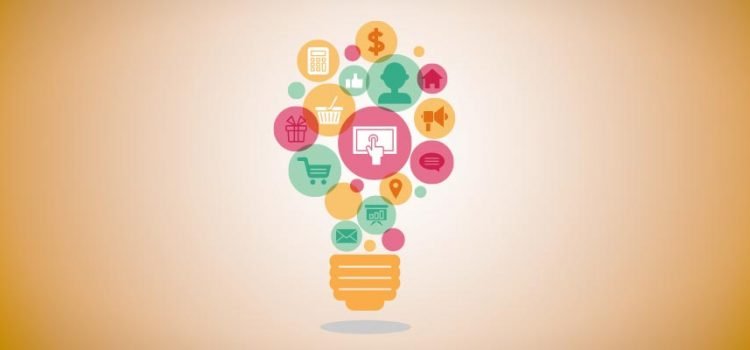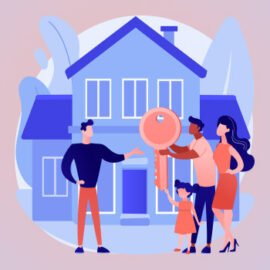
|
Getting your Trinity Audio player ready...
|
In another article, we showed how to use inbound marketing in tool integration. In this article, we go a little deeper into the strategy itself, so that you will discover exactly what inbound marketing is.
We also show how attract more customers with inbound marketing. Continuing the sequence, in this post, you will see:
- What is inbound marketing
- How to use inbound marketing
- The sales funnel and inbound marketing in action
- Summary
Check it out and don't have any doubts!
What is Inbound marketing?
Inbound marketing is an integrated digital marketing strategy that uses content as a starting point. Therefore, it integrates the digital marketing tools to attract visitors to your website, converting them into registered users: leads.
The strategy has direct marketing in its conceptual vein. Then, you use your user listings to build relationships and sell your products or services.
As the word itself says, it is an entry strategy, where the objective is to attract visitors, specifically to your website. Therefore, the central point is the content, which is offered by a blog and various relevant and quality materials.
This way, the blog will have a captive audience that, in all the actions coordinated by the strategy, will end up descending into a marketing and sales funnel. Consequently, the result will be the acquisition of new customers.
To make your visitor and lead go down the funnel, the idea is to use relevant and rich materials. This way, you will be able to qualify your audience, transforming them into customers.
The classic inbound marketing funnel has three positions: top (ToFu), middle (MoFu) and bottom (BoFu). These positions show where the visitor is in relation to when they make the purchase. Therefore, the content generated must take into account the visitor's stage. So, according to this stage, content generation is targeted.
How to use inbound marketing?
Build a persona
The first step is to know exactly who your ideal client is. We call this ideal customer “persona“.
This persona is much more than the target audience. It is the materialization of your ideal client, considering not only their demographic characteristics.
To build a persona, let's go further. We consider your desires, your moment in life and your preferences.
Therefore, the ideal is to create a profile through research. To get started, you can get first impressions from your sales team. But, later, the persona must be polished with realistic information, as it will be around them that we will develop all the attraction content.
Consider the consumer’s Purchasing Journey
The second step in using inbound marketing is to build a strategy that attracts this persona, considering their purchasing journey. In other words, at what stage she is in the search for a solution to her problem. It is based on this that we will build the sales funnel.
The classic purchasing journey has four stages:
- Learning and discovery;
- Recognition of the problem;
- Consideration of the solution;
- Buying decision.
The Steps
In the discovery phase, the potential buyer is not yet aware that they have a problem to solve. Thus, he doesn't even know he is facing a business opportunity. Therefore, you need to pique their interest. As we are talking about a content strategy, it is essential to present answers to the challenges common to this persona.
At this stage, we have more general content, but which quickly arouses interest.
The second stage of the journey, recognition, happens when the person understands that there is a problem to be solved. But he still doesn't have the solution in hand. At this stage, the content is more specific. Thus, it helps answer the main questions of this potential client.
The visitor who is in the consideration stage should already learn how to choose the solution to their problem. He is already thinking about getting a product or service. This is where the content should insert some triggers to drive that potential customer to the bottom of the funnel.
At the bottom of the funnel we have the purchase decision. The last phase of the purchasing journey is the stage where the potential customer is ready to consume. This way, the sales team necessarily enters the game, although in many inbound processes, pre-sales contacts can already be made in the previous stage. This is the crucial moment to not lose the lead, turning it into a customer.
The Sales Funnel and Inbound Marketing in Action
There are basically 5 phases in the composition of the sales funnel:
- Attraction;
- Conversion;
- Relationship;
- Sales;
- Loyalty.
There are other more complete models, but to understand the basic functioning of inbound marketing, let's just talk about these 5.
Attraction
As we all know, the digital world revolves around search engines. And that's why inbound marketing uses content as a starting point. After all, content will be the way to attract visitors.
Attracting this visitor can be done in a paid and/or organic way. This is where the tactics of SEM (Search Engine Marketing), which take into account exactly the development of a keyword strategy to bring the ideal visitor to your website.
At this moment, we use paid search, such as Google Ads, SEO (Search Engine Optimization) techniques and social media, which are also essential in the relationship phase.
So, generally speaking, the idea in the attraction phase is to generate the most qualified traffic possible to your website through your content. This way, we will transform this visitor into a recurring audience. Therefore, generating quality content will be essential for your website to be constantly visited.
Conversion
Making the visitor's experience pleasant is just one of the points to consider to achieve conversion.
As we already said, content is the key to this gear. For the visitor to become a lead, we will use capture pages and forms. Therefore, at this stage, rich materials come into play, such as e-books, webinars, infographics and spreadsheets.
But don't forget. The content must be extremely relevant and focused on the needs of your audience.
Don't forget to observe the LGPD rules when converting your lead.
Relationship
Your visitor has already converted into a lead. You provided excellent content in exchange for user registration. Now, let's work on the relationship, which can also be done through social media, but mainly through e-mail marketing. Here come other important strategies within inbound marketing: lead nurturing and the copywriting.
Speaking specifically about copywriting, it also goes into the top of the funnel, for generating leads. But it is essential for sales conversion.
You must keep your audience always informed with content, in order to make them move down your funnel. In this relationship phase, you will show your lead that you have the solution to the problem they are facing.
This way, he will interact with you and understand that you are the best choice for him.
Sale
If everything went well, this is the time when you can show your lead that they can trust you.
You convinced him, through your content, that your solution was what he needed to solve the problem he faced.
Your sales force received the marketing lead at the right point, at the right time and managed to turn it into a customer. Thus, the visitor who started the purchasing journey at the top of the funnel went down to the end and became a customer.
But although the sales funnel is finished, the work is not over. On the contrary.
Loyalty
This step is as important as the sales stage. Building a relationship goes far beyond simply winning over your client.
This way, in the loyalty stage, the customer will become a defender of your brand, a disseminator of your solutions. And so, he will indicate his solution on social media. This customer will be a multiplier.
In short
Inbound marketing is a complete and complex strategy. Bringing visitors in and making them a lead is a task that requires planning and dedication.
At all stages, it is very important to have tools at hand that will help you evaluate processes, making them more efficient. But the most important thing, at all times, is to always think about solving your potential client's problems.
Inbound marketing is, after all, the strategy that will always favor those with the best services and products. And one who knows how to communicate this to his audience.
How about putting together an inbound marketing strategy for your company? Talk to our team of experts!
Do you want to learn on your own how to do inbound marketing, from A to Z? Purchase the e-book Uncomplicated Digital Marketing – A Guide for Beginners in the Virtual World!
Take the opportunity to watch the video on the subject:

Marcel Castilho is a specialist in digital marketing, neuromarketing, neuroscience, mindfulness and positive psychology. In addition to being an advertiser, he also has a Master's degree in Neurolinguistic Programming. He is the founder and owner of Vero Comunicação and also the digital agency Vero Contents.




Comments are closed.